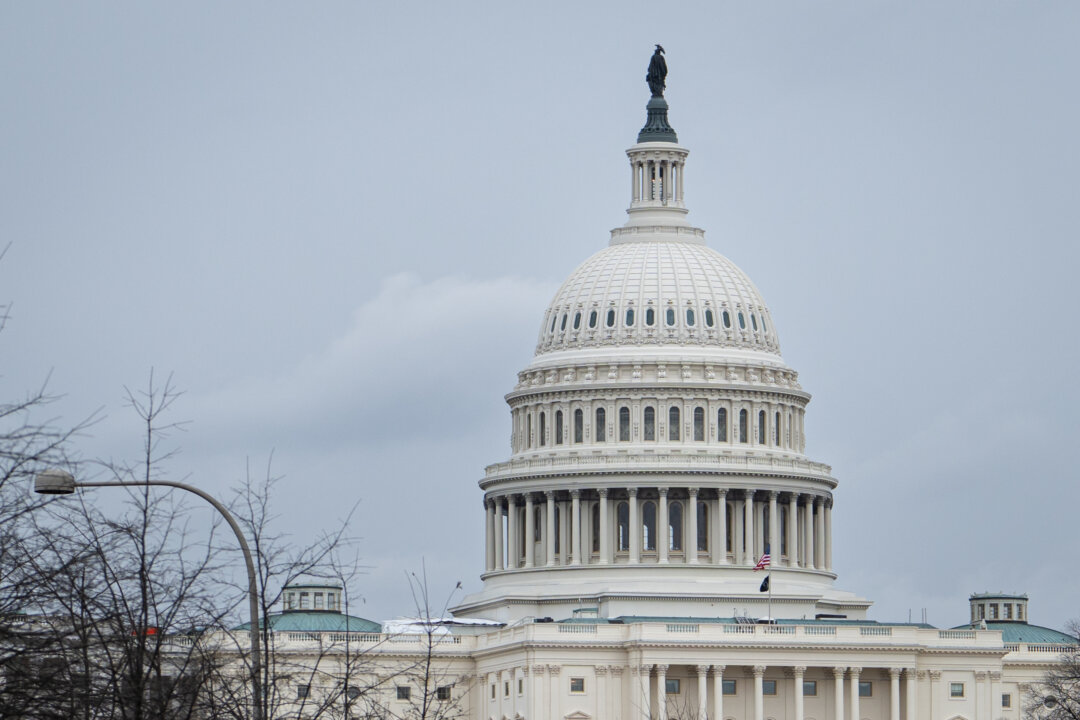
The budget resolution has been rejected by Trump, but is described by a senator as ‘plan B’ in case the House cannot pass its own plan.
WASHINGTON—The U.S. Senate in the early hours of Feb. 21 passed a budget resolution that forms the template of a plan to fund President Donald Trump’s policy initiatives, even as the president himself has rejected that plan.
Implementing Trump’s campaign promises—such as the removal of illegal immigrants from the United States, constructing a wall along the U.S. border with Mexico, and extending tax deductions made by the Tax Cuts and Jobs Act (TCJA) of 2017—requires Congress to pass legislation.
Republicans have turned to the budget reconciliation process to authorize funding for Trump’s plans because the method bypasses the Senate filibuster rule that requires 60 senators to advance legislation.
Reconciliation bills, which only apply to measures related to taxation, spending, and public borrowing, require a simple majority to pass in the upper chamber.
The bills also cannot increase the deficit after 10 years, and cannot include pure policy reforms—such as changes to asylum laws—that Trump also seeks.
To begin the reconciliation process, the Senate and House of Representatives must pass a budget resolution that sets funding levels for the fiscal year and instructs committees to make recommendations for spending increases or cuts.
The Senate passed its version of the resolution by a vote of 52-48.
“We’re … jumpstarting a process that will allow the Republican Party to meet President Trump’s immigration agenda,” said Senate Budget Committee Chairman Lindsey Graham (R-S.C.), the resolution’s sponsor, during a debate on the measure.
“We’re going to use it to secure our border. Without this resolution passing, there’s no hope,” he added.
The resolution has been rejected by Trump, who prefers the resolution being considered by the House.
The Senate plan calls for two reconciliation bills, with the second being focused on the politically complicated issues of taxation and the sovereign debt limit that are dividing Senate Republicans at present.
The House’s plan would have just one—a decision that House Speaker Mike Johnson (R-La.) has explained is due to the fragile consensus in his conference.
“The Senate budget resolution is the Plan B if the House is unable to pass their budget resolution,” Sen. John Cornyn (R-Texas) told The Epoch Times before the vote.
This sentiment was echoed by Senate Majority Leader John Thune (R-S.D.), who said on Feb. 19 that the Senate’s consideration was to give Congress more options.
It is possible that House Republicans, given their one-seat majority, may not be able to pass their resolution amid opposition of fiscal conservatives.
Passing the Senate resolution was a prolonged process, as Democrats sought to use up all 50 hours of debate authorized by the chamber’s rules.
They also introduced dozens of amendments, which were likely to fail yet intended to undermine the bill’s conservative character.
“Every day Americans will pay for billionaire tax breaks with their health care … with abandoned medical research … with shuttered family farms and businesses,” said Sen. Patty Murray (D-Wash.) during a debate on the resolution.
Democrats in the House and Senate have focused their opposition to reconciliation on the TCJA provisions, which are absent in the Senate’s resolution that pertains to the first of their intended two bills.
Both bodies must pass the same resolution concurrently. The absence of consensus in the Senate will likely mean further negotiations are required before any bills can be written.
“We’re not building a wall, folks, we’re hitting a wall. They need the money, and they need it now,” said Graham on Feb. 11.
Original News Source Link – Epoch Times
Running For Office? Conservative Campaign Consulting – Election Day Strategies!
